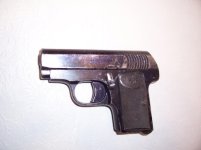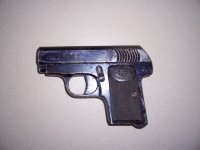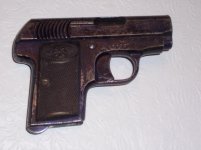Just FWIW, the Spanish gun industry was for a long time literally a "cottage industry." Here is how it worked, and probably still does in some places in Spain:
A "factory" turned out cast or (sometimes) forged parts. Then Pedro picked up a bunch of the parts and took them home. He had a gauge and a set of files. He (and his wife and his kids) filed those rough parts until they fit the gauge. Then he took the parts back, got paid, and got another bunch of parts to work on.
At the factory, a fitter took Pedro's parts and parts from other workers, and got busy with his own files to put the parts together to make a gun. When he had the soft parts fitted and working (sort of), he numbered the parts and sent them off to be case hardened, tempered, and blued as necessary. When he or another assembler got the parts back, he made sure the numbers matched so the fitted parts were all together. Guns were normally made in batches of a hundred or so, and those numbers are called "batch" numbers or "assembly" numbers. If a serial number was put on, it might or might not have a relationship the batch number, depending on how organized the factory was.
So it is pretty obvious that finding "drop in" parts for those guns will not be easy. One of the problems cropped up when a part broke on a Spanish gun, even good quality shotguns. The factory spares were not the parts Pedro worked on, they were the rough castings or forgings the factory started with. Now American gunsmiths can file and fit as well as the Spanish, they just charge a lot more for doing it. So an American gun owner who was used to drop-in parts from Remington or Winchester for a few dollars, found himself with a choice of paying hundreds of dollars for the equivalent part for his "bargain" Spanish shotgun or making a decorator out of it. Caveat emptor, or something like that.
Jim



